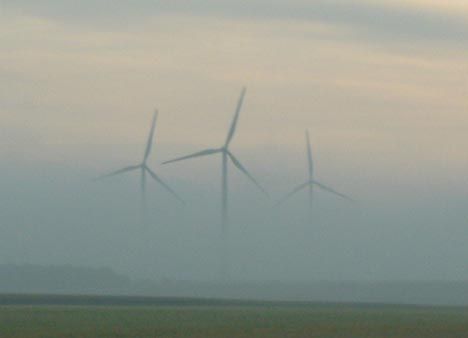Wind power had a big year in 2016 – but it risks an unpredictable future in the face of uncertain policy in the United States and in Europe.
In the United States, wind power achieved its second strongest quarter ever, according to the American Wind Energy Association (AWEA), surpassing hydropower to become the largest source of renewable electricity capacity in the United States. Overall, wind capacity now ranks fourth in the United States, behind coal, natural gas, and nuclear.

The wind sector also added 88,000 new jobs to the U.S. economy in 2015 — more than three times the 28,000 temporary construction jobs that the Trump administration claims would be created by constructing the Keystone XL pipeline (though reports suggest Trump’s estimate is likely grossly inflated). Wind turbine technician is currently the fastest growing job in the United States, and both wind and solar jobs are currently growing at rates faster than the U.S. economy, according to a report released last month by the Environmental Defense Fund. In 2016, for the first time, the number of U.S. jobs in renewable energy surpassed the number of jobs in oil drilling.
Capacity, while an important metric, is defined as the total amount of output a particular electricity generator can produce at a specific time, under specific conditions. Generation is the actual amount of electricity that is produced. And while renewables account for a large percentage of recently installed capacity, solar and wind still account for a small portion of total U.S. generation — 4.7 percent for wind and 0.6 percent for solar.
Wind also had a big year in Europe, with wind accounting for more than half of all new installed capacity for the first time ever. Renewable energy writ large accounted for nearly 90 percent of new power added in Europe last year, with 21.1 gigawatts of the total 24.5 new gigawatts installed coming from wind or solar, plus more controversial renewable technologies like biomass and hydropower. That new renewable capacity helped push wind past coal to become Europe’s second largest form of power capacity, though coal still is used to meet more of the continents electricity demand.
Germany led the charge in installing new wind capacity, installing nearly 44 percent of the total wind capacity installed in Europe in 2016. France installed the second most wind capacity, with the Netherlands and the United Kingdom ranking third and fourth, respectively.
But growth of wind and renewables faces an uncertain future, as fossil fuel-friendly politicians in the United States and Europe look to curtail policies aimed at bolstering renewable growth. In the United States, Trump has pledged an “America first” energy plan that involves extracting coal, natural gas, and oil from federal lands and offshore drilling sites, and has criticized wind for being too expensive and killing “all of the birds.” (In reality, energy costs are at a record low in the United States, thanks in part to the adoption of wind and solar technologies.) Despite his distaste for wind power, however, Trump did tell voters in Iowa during the campaign that he supported subsidies for wind, like the production tax credit.
The U.S. Congress agreed to extend both the production tax credit and the investment tax credit, meant for solar power, in 2015, and because renewable energy like solar and wind is big in both Republican and Democratic-controlled states, its often looked at as a bipartisan issue. Still, it’s unclear how much support these industries can expect from the Trump administration, whose policies focus on fuels like coal and oil much more than renewables.
In Europe, only seven of the European Union’s 28 member countries have clear plans to continue wind power growth through 2020, Giles Dickson, chief executive of WindEurope, told the Guardian.
“We today see less political and policy ambition for renewables than we did five or even three years ago, across the member states,” Dickson said.
In the United Kingdom, for instance, recent policies have made it more difficult to develop onshore wind by requiring that the land be identified as suitable for wind development in a Local or Neighborhood Plan. Most local plans were developed before this was required, however, meaning that many local plans don’t include wind energy — making it difficult to install more wind capacity.
This article was originally published by Think Progress. Reproduced here with permission










